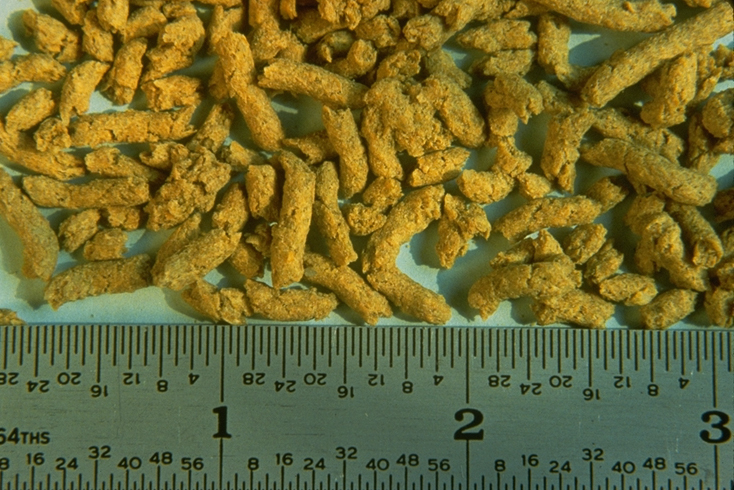
When the outer layer of brown rice, or bran, is removed to make white rice, it sets off a ticking time bomb for processors. The milling process activates an enzyme in the bran that quickly breaks down lipids—destroying the valuable fat that could otherwise be extracted as rice bran oil. Moreover, raw rice bran has a very short shelf life, leaving a narrow window for processors to extract the oil before it turns rancid.
Beyond these tricky enzymes, rice bran particles’ physical size and structure present additional challenges that make processing difficult, especially when racing against the clock. However, processors can buy some extra time—and tap into additional profits—by stabilizing the bran before extraction to ensure high-yielding, good-quality rice bran oil.
Rice bran processing issues
With a high-fat content comparable to soybeans, between 20-25%, rice bran is too valuable as an oil source to be discarded as waste once removed from the kernel. Unfortunately, the grinding process that separates the bran from the kernel generates frictional heat, which activates a fast-acting lipase enzyme in the bran. As soon as the bran is milled off, these enzymes rapidly break down triglycerides in the fat, releasing free fatty acids that accelerate rancidity and spoilage.
Within just a couple of days, these enzymes can destroy up to 10% of the oil in the rice bran. After three months, left untreated, as much as 70% of the oil could deteriorate—along with any potential profits. That’s why oil mills must act faster than the enzyme to either extract oil from the bran immediately or find a way to stop the reaction in its tracks.
Another challenge when processing rice bran oil is the fine powdery texture of the bran, which can create problems throughout extraction. These small particles can clump and clog the extraction baskets, creating a mess at the plant and making the resulting oil more challenging to clarify after extraction.
These inherent challenges can severely limit processing capacity, yields, and profits for rice bran oil processors unless they can find an economical solution.
Rice bran stabilization
To solve these processing challenges, Anderson International developed a patented process for stabilizing rice bran with the Solvex™ Expander. The high-pressure, high-temperature environment inside the Solvex safely deactivates enzymes while also compacting fine particles for more efficient solvent extraction.
The Solvex works like a continuous pressure cooker by elevating the pressure and temperature of the rice bran while adding steam and water to raise the moisture level. Reaching a moisture level of 25% is critical to deactivating the enzymes completely because high moisture facilitates an effective heat transfer to destroy the lipase enzyme without scorching the fat. Whereas moisture levels below 15% may temporarily slow the enzymatic action without stopping them.
As the bran is conveyed through the barrel by a rotating shaft, the particles gelatinize into a paste. When this wet bran is discharged from the Expander, the sudden drop in pressure causes the water droplets to vaporize suddenly, forming a compacted, porous material known as collets. These collets can be stored for several months and even years without deteriorating—giving processors more time to extract rice bran oil.

Stabilizing rice bran with an expander like the Anderson Solvex improves extraction by:
- Increasing capacity. The Solvex allows up to 50% more capacity in the extractor by compressing bran powder into porous collets.
- Decreasing solvent use. Solvent flows freely through the porous collets so rice bran oil can be extracted faster and more efficiently, reducing the amount of solvent required.
- Boosting yields. Using an expander before extraction can improve oil recovery rates, leaving less than 1% residual oil behind.
When stabilized properly, this rice byproduct can be efficiently and economically processed into rice bran oil for cooking, human consumption, and cosmetic applications. The meal left over after extraction can be used in livestock feed and pet food. However, if lipase enzymes aren’t stabilized, both the raw bran and the extracted oil spoil quickly, making products unfit for consumption.
Optimized for rice bran oil
Although bran comprises a small portion of each grain of rice—requiring 1,000 pounds of milled rice to produce 50 pounds of bran—this lightweight byproduct can turn big profits with the proper processing. Preserving the fat content in rice bran requires stabilization in an Expander system like the Anderson Solvex as soon as possible after milling.
With capacities of up to 500 tons of rice bran per day, the Solvex helps processors convert a challenging byproduct into a profitable source of oil. Since patenting this stabilization process nearly 50 years ago, Anderson International’s engineers have helped processors around the world destroy the fat-busting enzymes and other issues that stand in the way of profitable rice bran oil extraction.
Ready to turn your rice bran processing problems into profits? Contact Anderson today to learn more about the Solvex Expander.